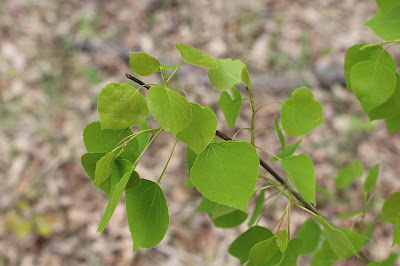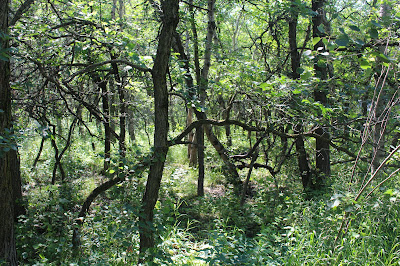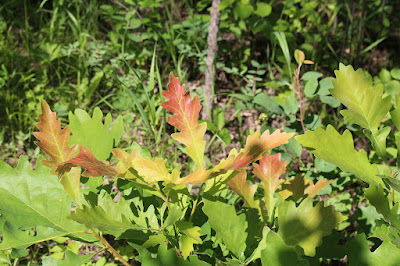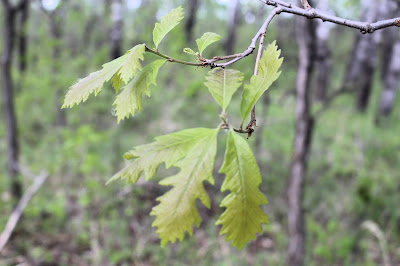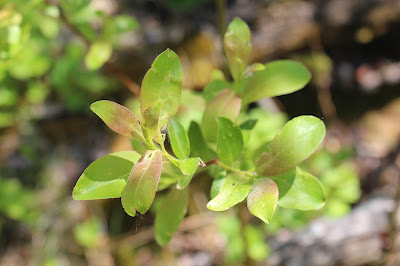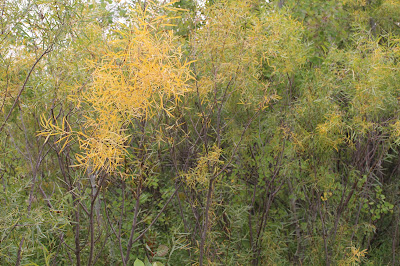Click on Images to Enlarge
Various Deciduous
Trembling Aspen
Populus tremuloides
Native, also known as Quaking Aspen, Mountain Aspen, Golden Aspen, Trembling Poplar, White Poplar
Trembling Aspen finds its home in cold regions with cool summers in the northern
part of the northern hemisphere, throughout the world. In North
America, it extends from the east coast to the west coast, as far north
as the Yukon and Alaska, and as far south as Colorado, with some smaller
patches a little further south. Typically Aspen exists in forests
dominated by Spruce rather than by other deciduous trees. The
Assiniboine Forest is an exception - it co-exists here with Bur Oak with
relatively few Spruce.
Aspen appears to be by far the most common species of tree in the
Assiniboine Forest. In some areas of the forest, Aspen is
intermixed with Oak, but in several spots Aspens are grouped together
in large stands. Trembling Aspen is known best for its array of
shimmering leaves on windy days.
But perhaps the most noticeable thing about Aspens for anyone who walks
the trails is the bark. For this reason, a more detailed page on
this site explores the nature of the bark through a collection of photos
from the Assiniboine Forest. See
Aspen Bark in the menu
above.
Aspen root systems are rhyzomatic. Derived from a single
aspen seedling, the root system suckers can send up new stems over
100 feet from the parent tree.
Female catkins. Male catkins are shorter.
Aspen female catkins with fertilized flowers which have turned into
seed capsules. A single catkin can have 70 to 100 capsules,
each containing 3 to 9 seeds.
Close-Up
Cotton on Female Catkins

Trembling Aspen Catkins and Cotton in the Ditch
Bur Oak
Quercus macrocarpa
Native, also known as White Oak, Scrub Oak, Mossycup Oak, Blue Oak
This majestic bur oak, perhaps the largest in the forest, features
about 6 trunks fused at the base.
This early July photo shows how young Bur Oak saplings can show
colour well before autumn.
Green Ash
Fraxinus pennsylvanica
Native, also known as Red Ash, Downy Ash, Swamp Ash, Water Ash
American Elm
Ulmus americana
Native, also known as White Elm, Water Elm

This one is located on the Harte Trail
Manitoba Maple
Acer negundo
Native, also known as Box Elder, Boxelder Maple, Ash-Leaf Maple
Amur Maple
Acer ginalla
Introduced
It's likely that
the above Amur Maples self-seeded from yards in Charleswood.
There are quite a few of them in the forest, and it's surprising
that they don't show up on the Habitat Site List.
Russian Olive
Elaeagnus angustifolia
Introduced, also known as Wild Olive, Oleaster, Silver Berry

The Russian Olive is not a true olive, but bears a fruit that resembles the olive fruit.

Willows
Brittle Willow
Salix fragilis
Introduced, also known as Crack Willow
Basket Willow
Salix petiolaris
Native, also known as Meadow Willow, Slender Willow
Bebb's Willow
Salix petiolaris
Native, also known as Beaked Willow, Long-Beaked Willow, Gray Willow
Pussy Willow
Salix petiolaris
Native, also known as Glaucous Willow
The catkins on this Pussy Willow have opened up, changing their
appearance from a silvery white to a pale yellow.
This Pussy Willow features a cluster of trunks fused together
at the base, where the tree has a circumference of 11 to 12
feet. It is 25 to 30 feet in height, as big as they
get. A nearby pussy willow has similar dimensions.
Gray Willow
Salix humilis
Native, also known as Prairie Willow, Upland Willow
Sandbar Willow
Salix exigua
Native, also known as Narrow-Leaved Willow, Coyote Willow
Conifers
White Spruce
Picea glauca
Native, also known as Canadian Spruce, Western White Spruce
Spruce trees are plentiful in the North Forest
This spruce, no more than 30" in height, is one of the very few
in the South Forest. The handful of others are even
smaller.
Unidentified
I have this plant tentatively identified as Balsam Poplar,
a species listed on the Habitat Site List. But then, there
are no larger Poplars nearby, and I haven't found any at all in
the South Forest. I suspect then that it may be an
Aspen. Aspen is of the genus Populus, and quite often the
leaves of the younger plants are enlarged. You see this also
with Bur Oak.


